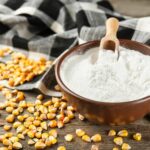Indian sesame seeds are one of the most popular seeds in the world and also the most nutritious. These seeds are cultivated and harvested mostly in tropic climates and weather conditions across the world and some of the countries which are top producers and exporters are India, Thailand, Mexico and others. India is known for its rich sesame seed production and is the number 1 exporter of these seeds. To know more about the Indian sesame seeds, you can go through the following given information.
Organic sesame seeds, their oil and their powder are used extensively in Indian recipes and dishes. In this country, sesame crop is cultivated as Kharif, summer and as a semi-rabi crop as well. These Indian sesame seeds are available in two main colours-black and white but other varieties like red sesame and yellow sesame can be found too. About 75% of the Indian sesame seeds are cultivated during the Kharif season in the subcontinent.
Some of the local names of Indian sesame seeds are til, ellu and tul. Some parts of the country in which these seeds are mainly grown include West Bengal, Gujarat, Uttar Pradesh, Tamil Nadu, Andhra Pradesh and Madhya Pradesh. The sesame crop is known to thrive well on soils which have neutral soil. For better growth performance, one must make sure that the soil is well drained and light loamy. The soil pH range should be 5.5 to 8.0. Companies like HL Agro and other major players in the sesame industry in India make sure that the soil in which the seeds are grown is not too sandy or saline.
The sesame crop can be cultivated at heights or elevations of up to 1250 m. The crop does not grow or perform well in prolonged droughts or frost conditions. Even heavy rains are not suitable for the crop to grow. Since sesame crop is a tropical crop, the crop requires hot conditions at the time of its growth for the maximum produce. For sesame cultivation, the ideal temperatures are between 25 degree Celsius and -30 degree Celsius. Both extremely low temperatures as well as extremely high temperatures may affect the growth of the crop.
The land on which the sesame crop is cultivated must be ploughed using a tractor or a country plough. It must also be harrowed so as to bridge the soil to fine tilth. Farm manure too must be added while the soil or bed is being prepared. As far as the seed rate is concerned, the sowing method and variety of seed may be decided factors. The sowing of the seeds must be done in line or in the broadcast. Companies like HL Agro are involved in the wide-scale production of the best quality Indian sesame seeds, invariably high in purity, aroma & vital nutrients.






